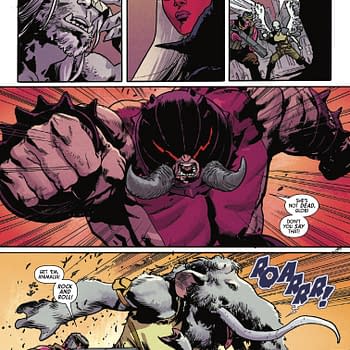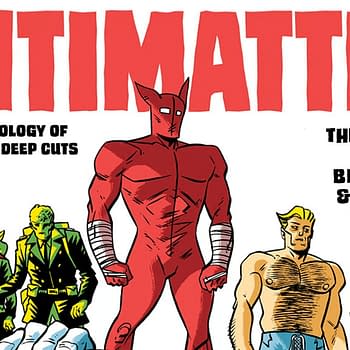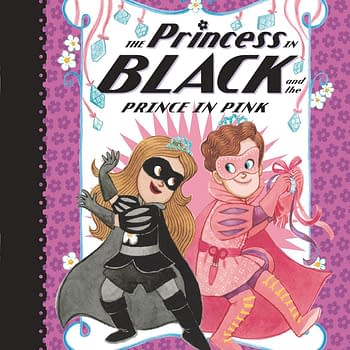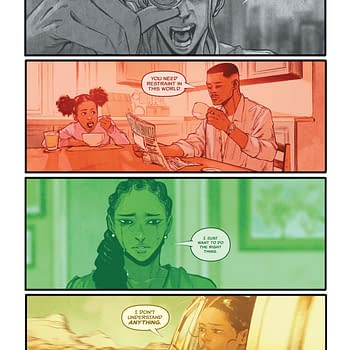Posted in: Comics | Tagged: black panther, Comics, entertainment, HRL, Jungle Queen, She, sheena, will eisner
Deconstructing The Jungle Queen Trope As Sheena Returns To Comics
There are many pulp and comic book tropes that started in first half of the 20th century that we look at today through a more enlightened eye and see the flaws. The racial and gender stereotypes that permeated those early stories would never work today for a new character, but for iconic figures that we love from our youth, we try and excuse away or ignore the norms of that era. The extremely racist portrayal of Ebony White in the pages of the Spirit is a great example. The work of Will Eisner is still celebrated today and the main character is published, but that part of the history is pushed aside.
Another trope from that era was the idea of the scantily clad white woman ruling over an African tribe. Similar to Edgar Rice Burroughs' tale of Tarzan, except the very first Jungle Queen predated Lord Greystoke by 25 years. The first character to fit this mold was H. Rider Haggard's novel She published in 1887. The protagonist, Ayesha, was searching to reincarnate a lost love, similar to Bram Stoker's Dracula which also came later. It was a Victorian era adventures to the Dark Continent of Africa where two brother's encounter the 2,000 year old white beauty ruling over a native tribe.
The novel started the trope that would continue in comics, pulps and B-movies with Darwa, in the 1919 film A Scream in the Night; the Jungle Girl in H Bedford-Jones's Jungle Girl in 1934; and Sheena, created by Eisner and Jerry Iger in 1938. All of them were beautiful white women who end up wearing animal skin bikinis and ruling the tribes around them — a feminine twist on the white savior trope. But the difference being that where it was derogatory towards people of color, it was empowering to women. Even Marvel's predecessor, Atlas Comics, had their own version in Jann of the Jungle.
Recently the Guardian took a look at this Jungle Queen trope in an attempt to deconstruct it. They talked to Gary Phillips, co-editor of the Black Pulp anthology:
"On one hand, Africa had an exotic quality that those writers were fascinated by because it was unknown, yet they couldn't wait to exploit in print … like they did with China, the Casbah, the sands of wherever and so on. The 'natives' are not individualised. Maybe there's a loyal gun bearer, but the rest are superstitious savages. Was it some kind of transplanting of Manifest Destiny from the US west to the so-called Dark Continent?
And what better symbol of white superiority than the jungle queen who comes along at a time when black men in some parts of the country are still getting lynched, or railroaded into prison for even looking sideways at a white woman? Yet here she is, swinging by overhead on a vine – in a leopard bikini."
Margaret Atwood, author of The Handmaid's Tale, wrote in a forward to an edition of She:
"Whatever She might have been thought to signify, its impact upon publication was tremendous. Everyone read it, especially men."
This all hit at a time when pulp publishers were looking to increase female readership through romance novels and the introduction of the female private eye. The jungle queen craze fit into this movement perfectly.
Phillips went on to talk about how the Black Panther, created by Stan Lee and Jack Kirby, helped to streamline the jungle queen trope:
"We've had Shuri, T'Challa's half-sister, don the mantle of the Black Panther in Marvel comics and become the Queen of the Wakandas. We've had queer woman warriors in World of Wakanda and the genocidal horrors of King Leopold wrestled with in a Tarzan movie, for goodness' sakes … so yeah, the creative stakes are different, given the socio-political real world context for these kind of stories."
This all comes up because of the recent return to print of one of the earliest Jungle Queens, Sheena. Being written my Marguerite Bennett and Christina Trujillo, with art by Moritat. Sheena is no longer a white savior, but a multiethnic woman who has never lived outside the jungle. Bennett told the Guardian:
"The traditional tropes of the 'jungle queens' were and are problematic. With Sheena, we are at least attempting to play with these tropes in a way we hope is self-aware, thoughtful, progressive, and engaging. With a mother who is both native and Latina, her cultural heritage is intended as acknowledgment that there are people who have dwelt there longer and who have a greater understanding, connection, and history [with] the place and its cultural significance than someone who is simply passing through. She isn't coming in from another culture, trying to improve or save, or be 'Kevin Costner: the superior Native American' or 'Tom Cruise: the superior samurai'… It isn't a hobby, a game, a sightseeing tour for her. This is her home."
Sheena #0 hits in August with more information on the series here.


















